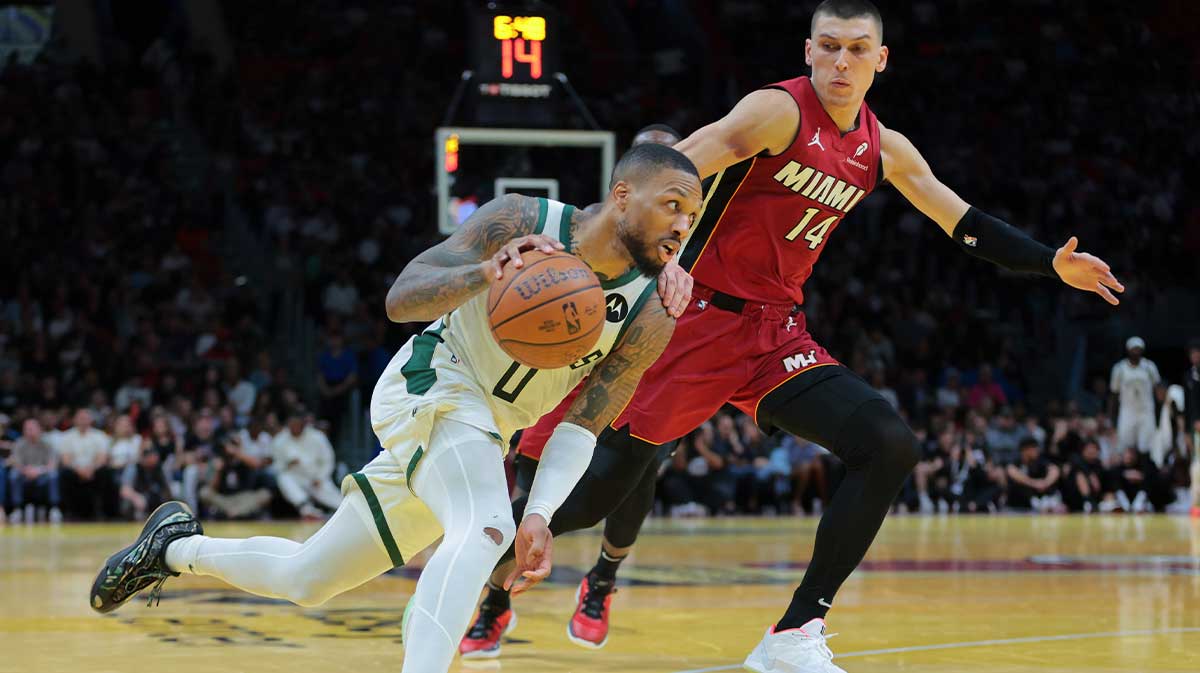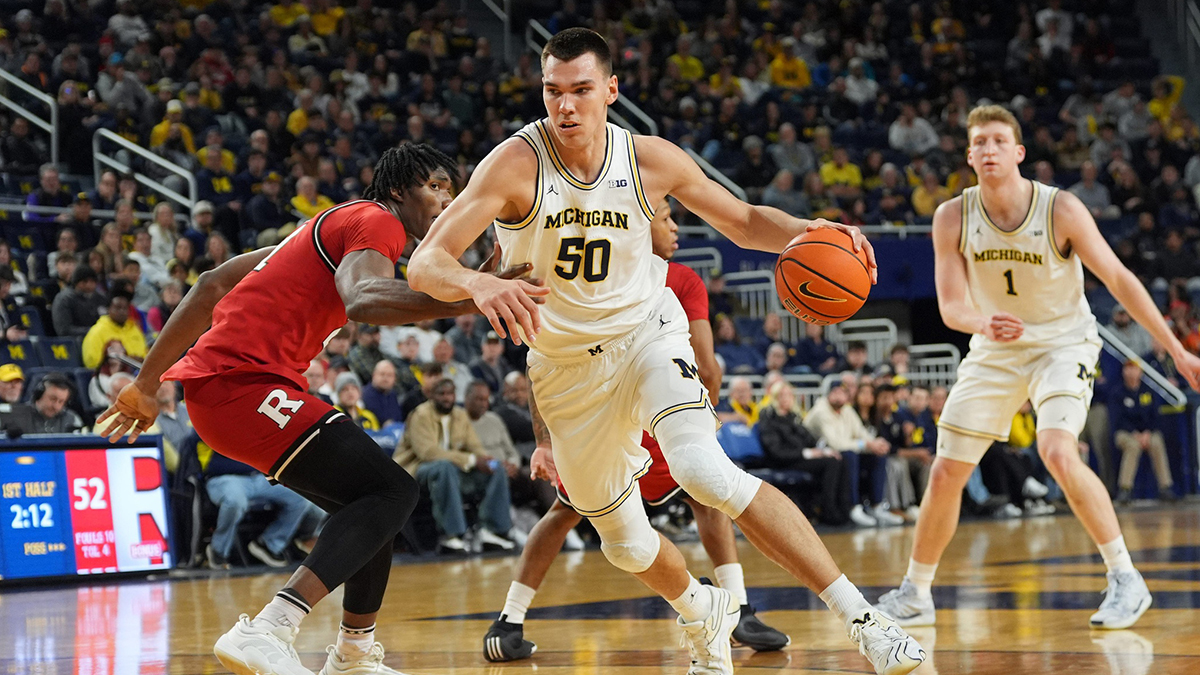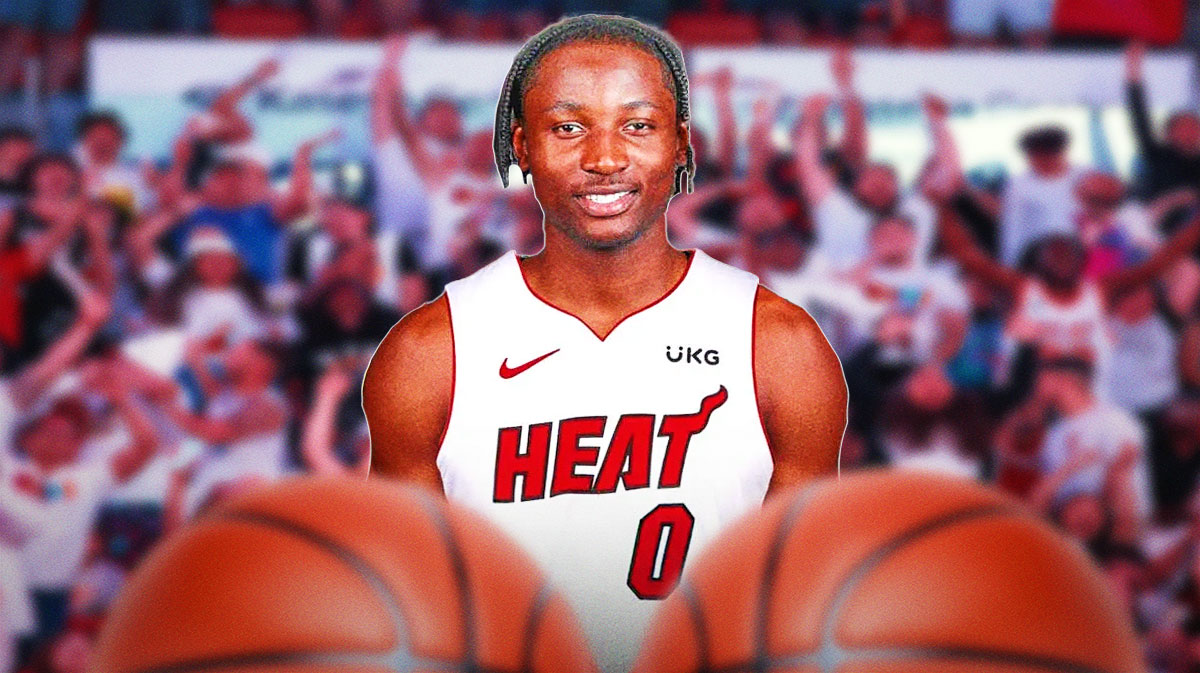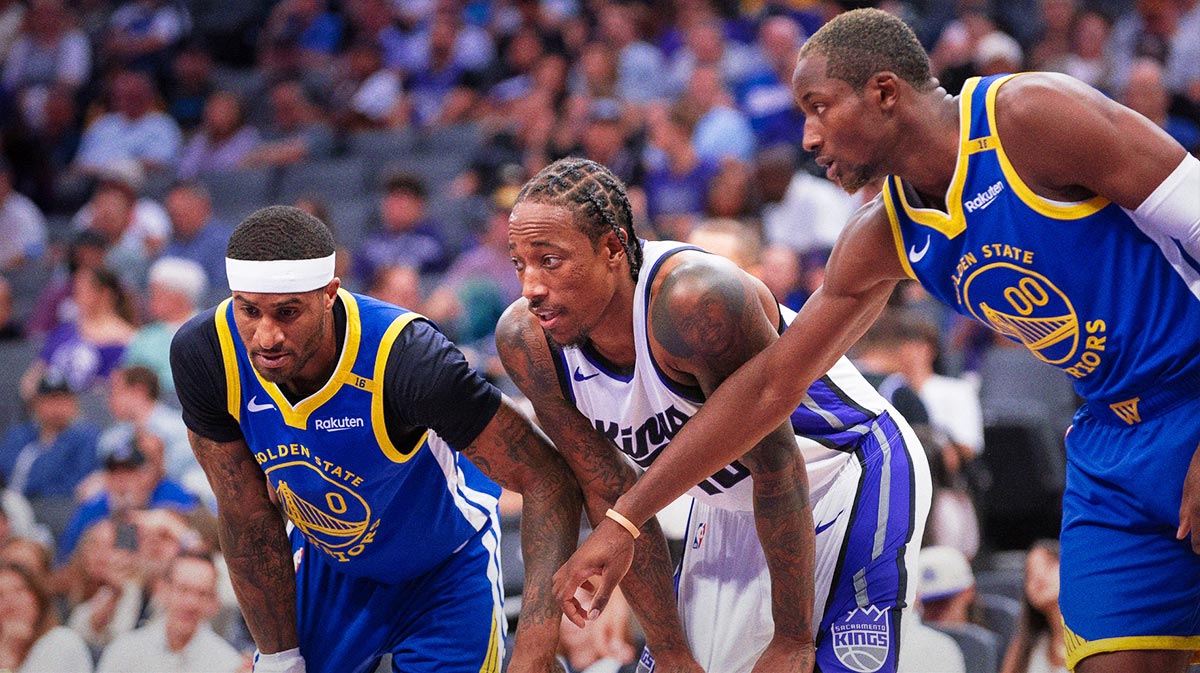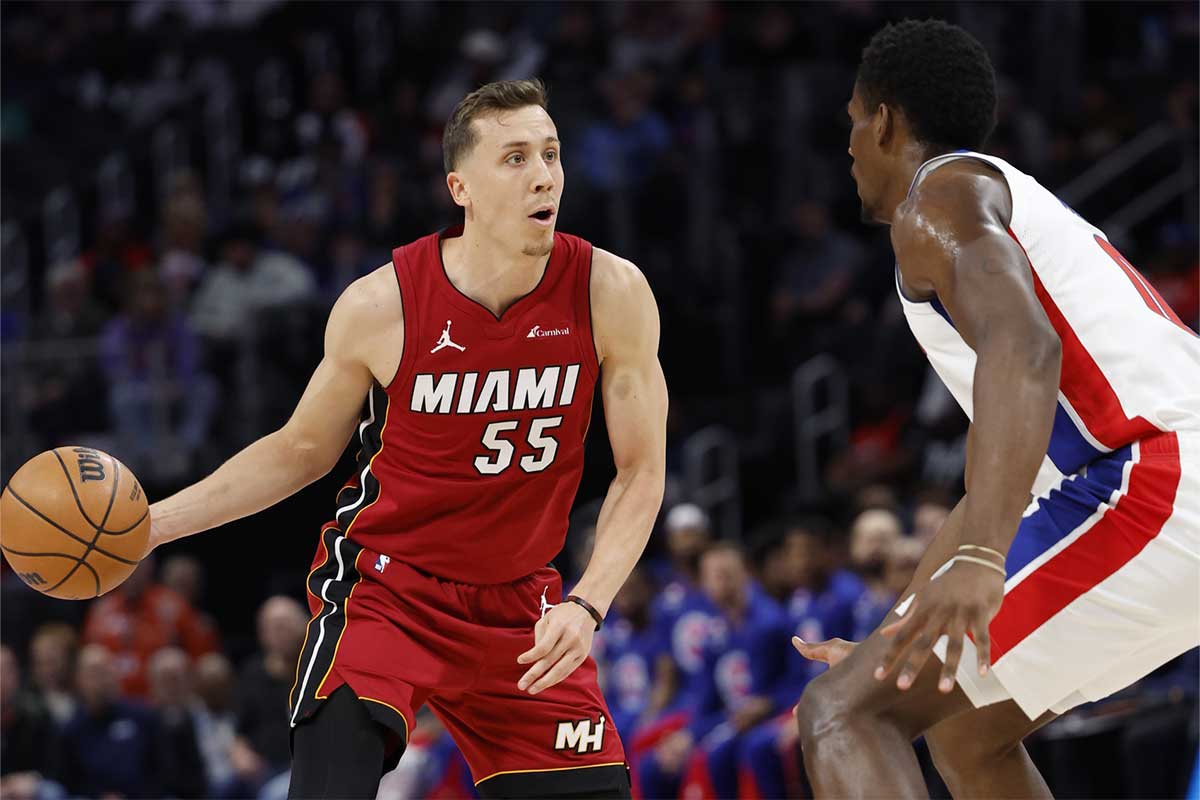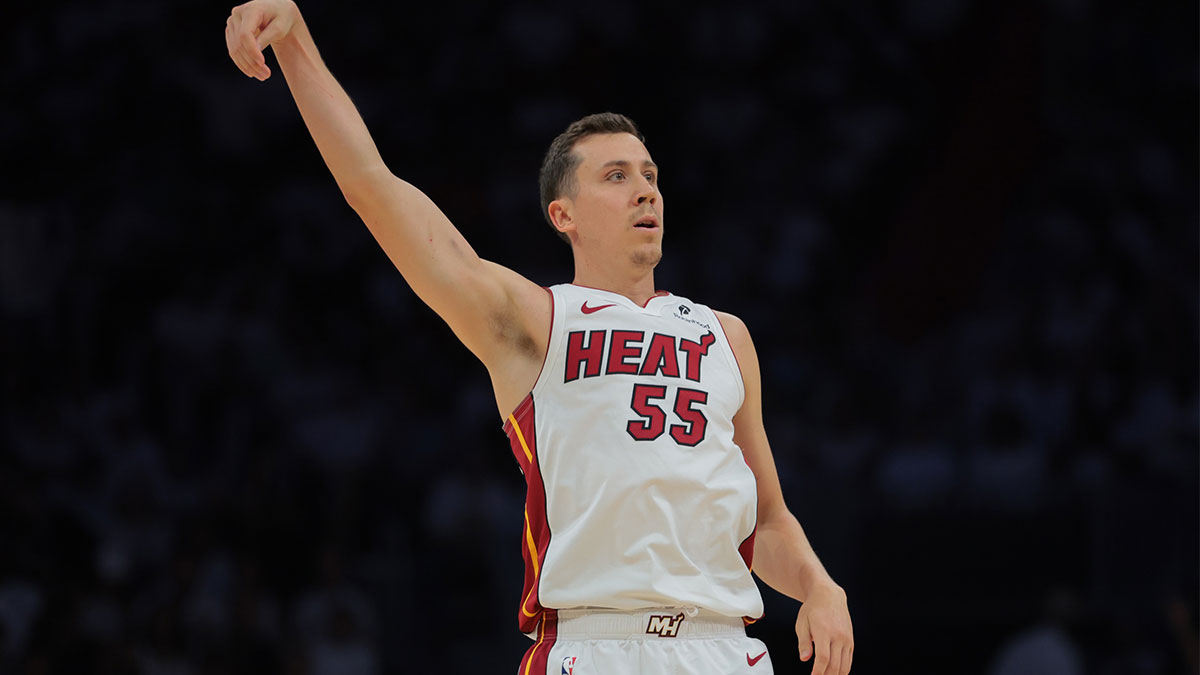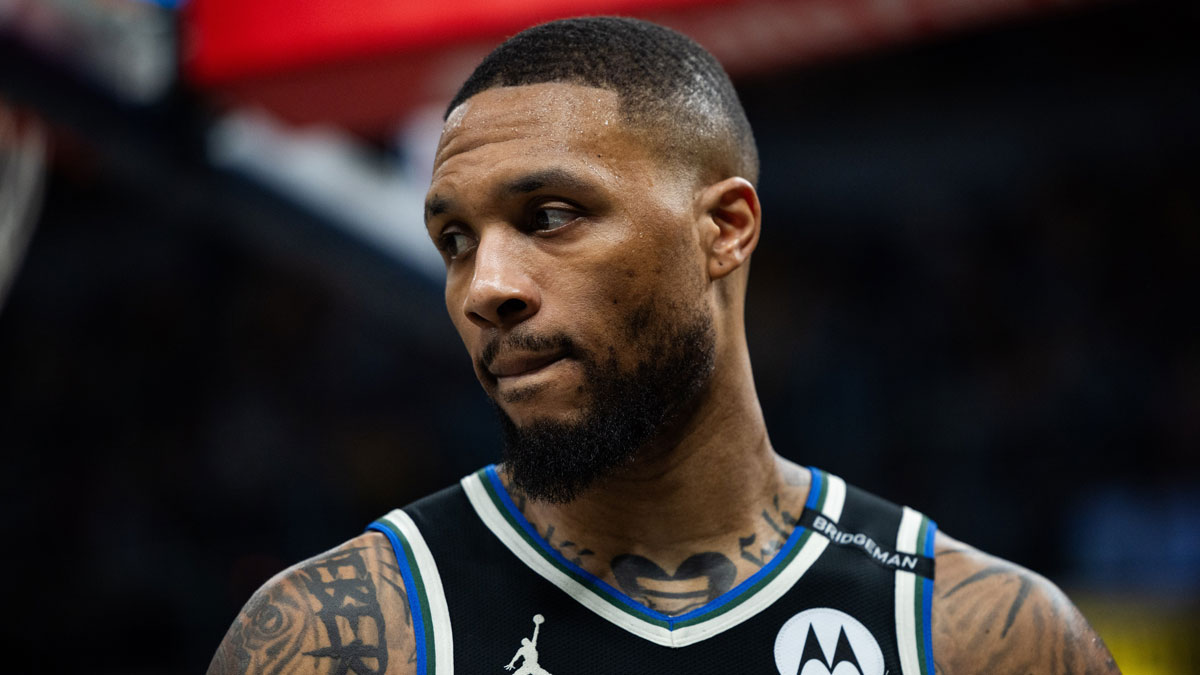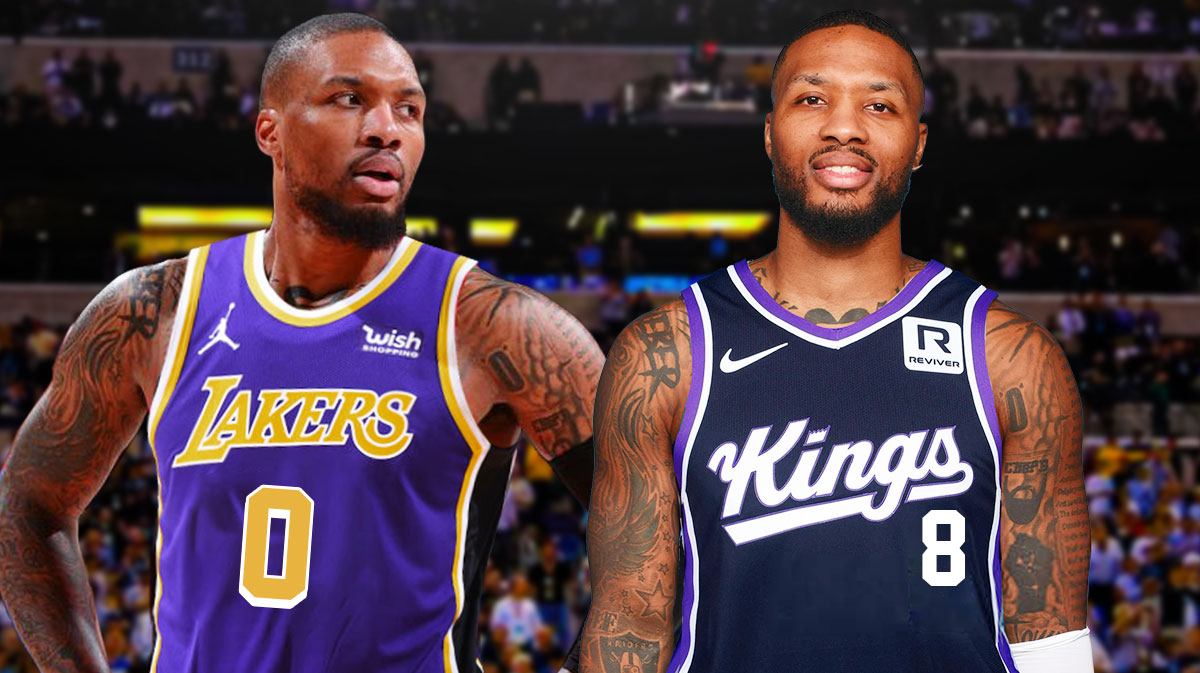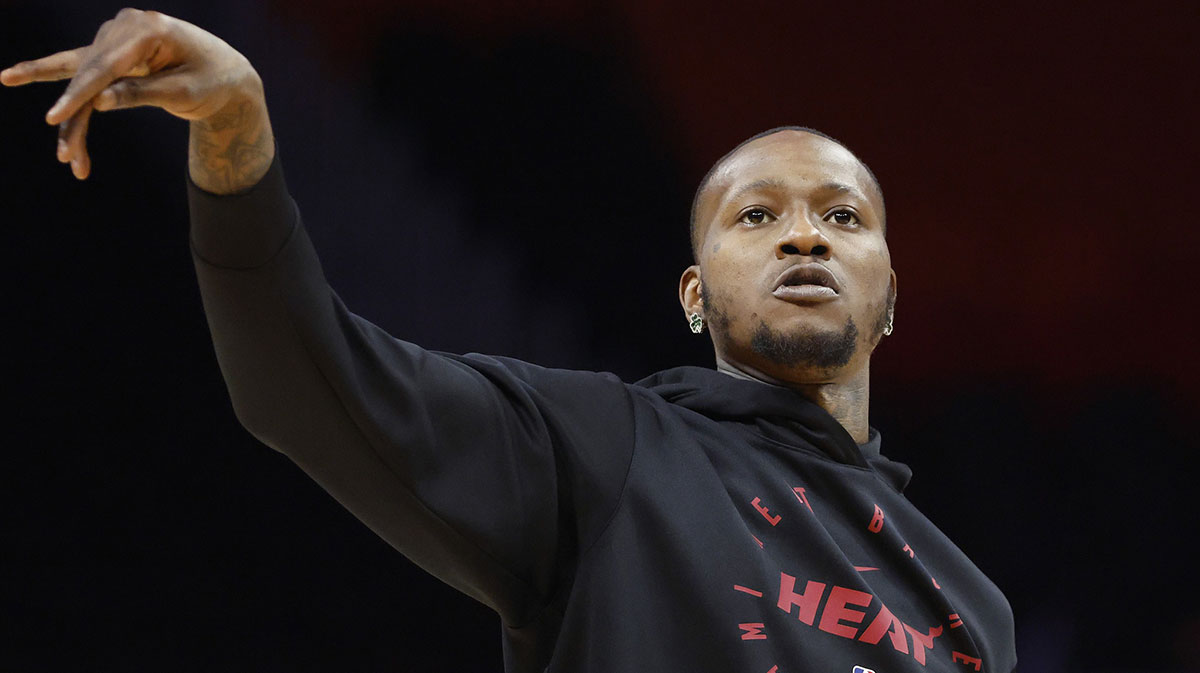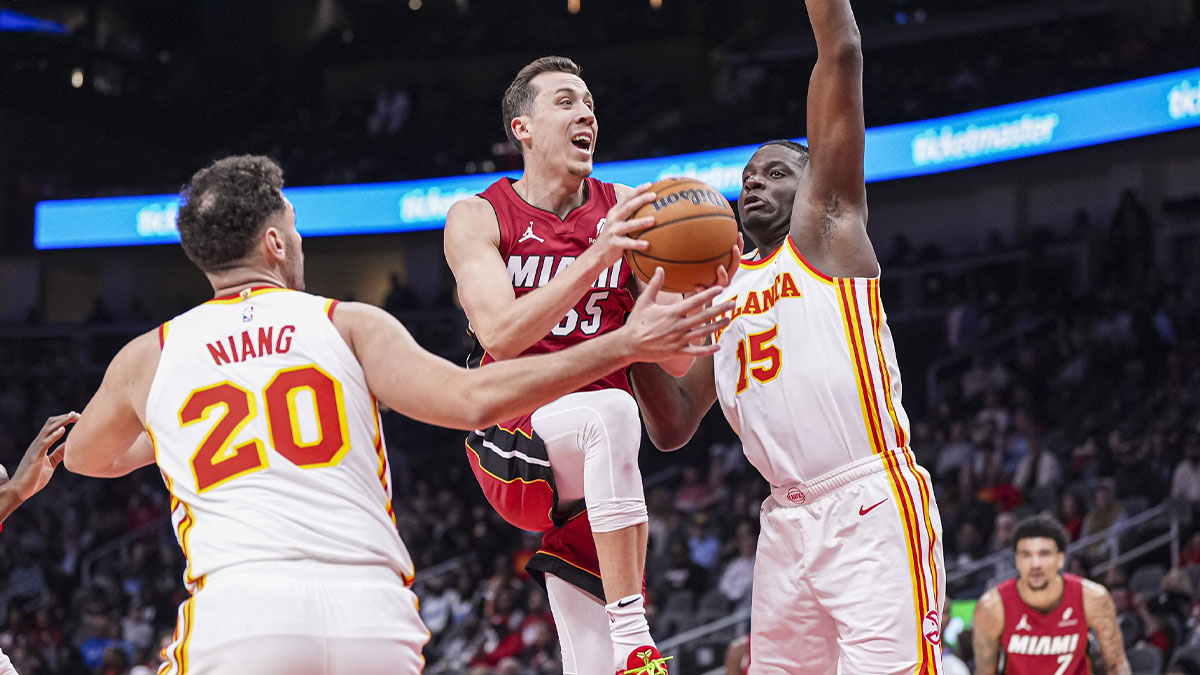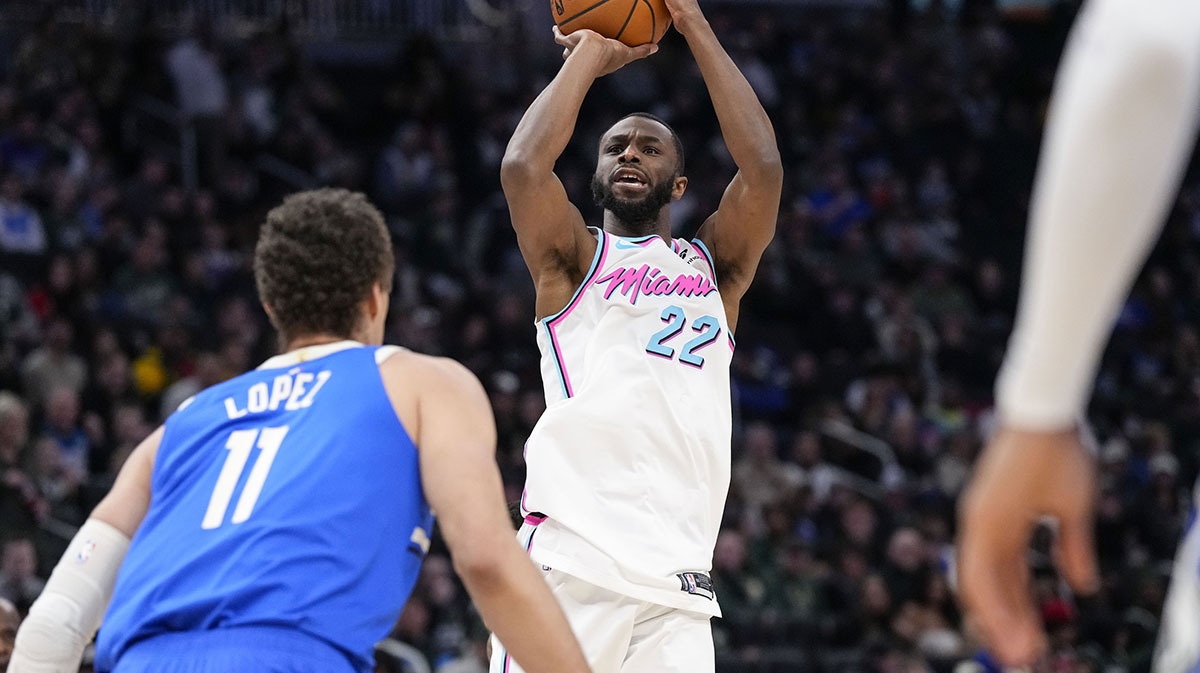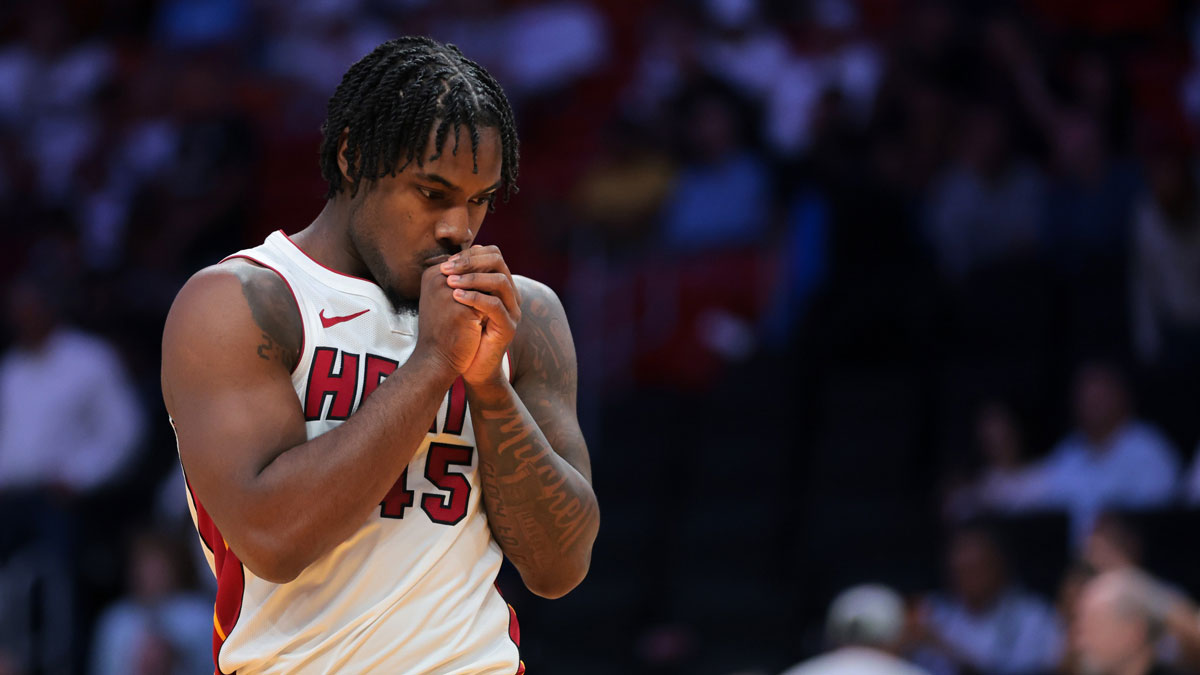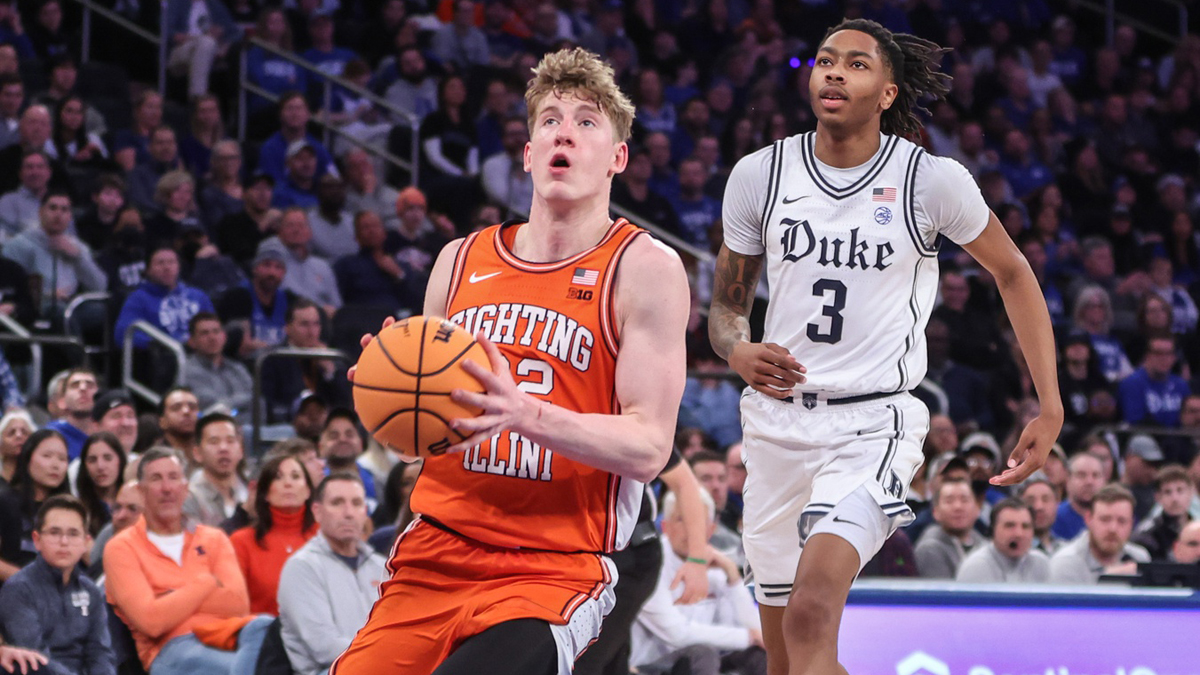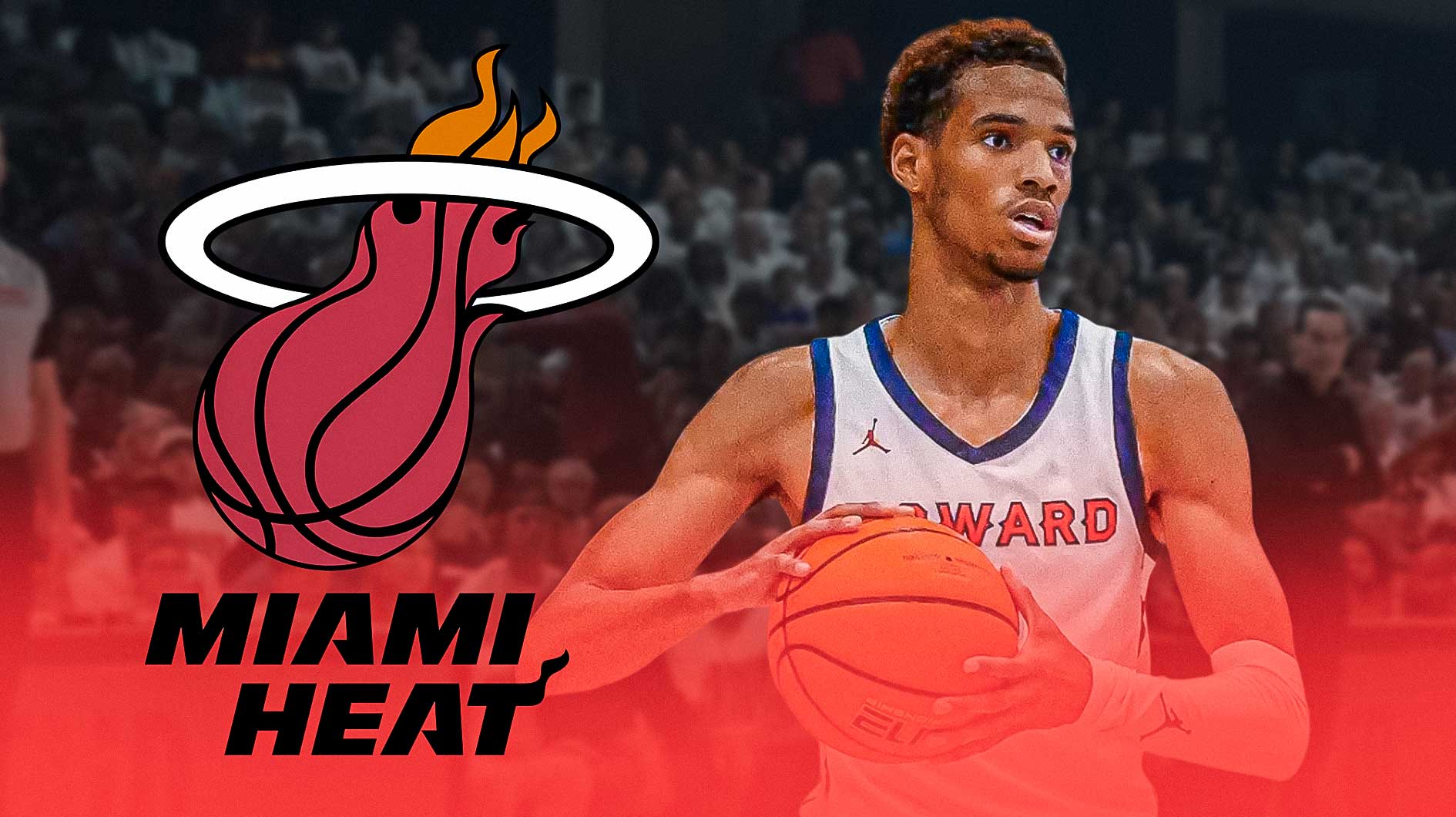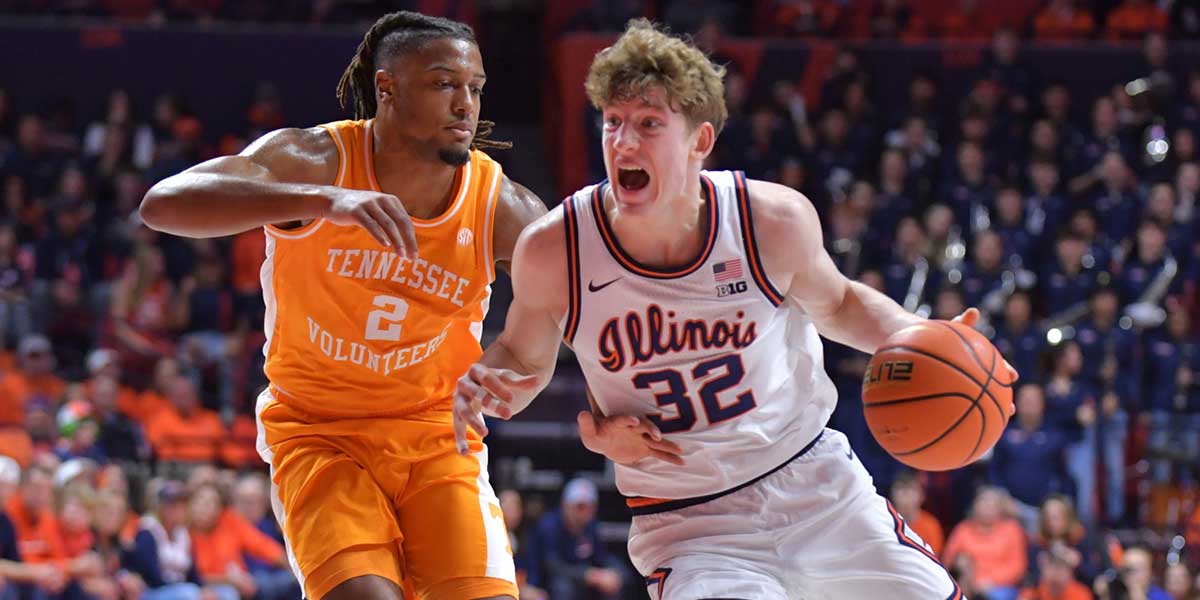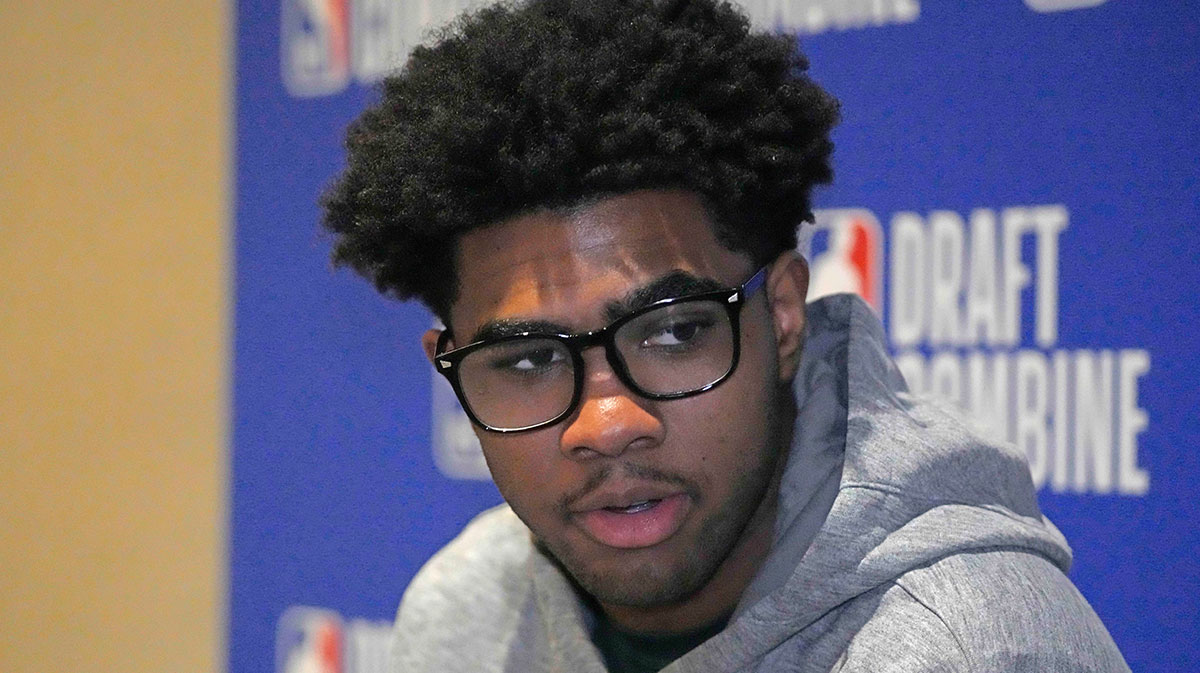LeBron James is such a dominant personality he’s practically a franchise identity unto himself. His departure would be enough to leave any organization in ruins.
That the Miami Heat persist speaks to the cultural foundations set by Pat Riley.
James returned to Cleveland, Dwayne Wade and the Heat had a tumultuous, momentary split, and Chris Bosh was forced to retire early. And still, in the midst of all that rubble, Riley and Spoelstra were ready to pick up the pieces with different names garbed in the same Heat identity.
Miami found a gem in Hassan Whiteside. Riley pulled the trigger on a big deal for Goran Dragic. They’ve hit single after single in free agency and the draft, filling out the roster with competent, capable and multifaceted talent from top to bottom.
They’re currently 41-36 in the Eastern Conference, currently eighth in the Eastern Conference playoff standings. Their only All-Star, Goran Dragic, made the team as an injury replacement.
So, what makes the Heat so competitive despite a roster of relatively mundane players? Simply put, they all blend well together well, have a ton of versatility, and defend at a championship caliber level.
Eleven players log more than 20 minutes per game in Miami. Everyone is fresh and in tip-top cardiovascular shape. The entire team seems to have a nitrous-fueled boost out in transition no one else can match.
Defense forged in the Heat

Defense will always be Miami’s calling card under Spoelstra and Riley. The Heat have a defensive rating of 104.0 points per 100 possessions, which ranks eighth in the NBA.
The name of the game in today’s NBA is getting opponents to take the shots you want them to, not the shots they want.
If high-caliber offenses favor three-pointers and opportunities at the rim, conventional wisdom dictates defenses should try to force as many contested mid-range jumpers as possible.
Here’s where Spoelstra’s defensive schemes shine.
The Heat are in incredibly averse to three-point attempts, designing an entire scheme around chasing opponents off the three-point line. Miami gives up the third fewest three-point attempts per game at 26.4. Their defensive two-point percentage of 49.3 is in the top 10 in the league, blocking 5.2 shots per game (seventh in the NBA).
They’re also good at ending possessions with a defensive rebounding percentage of 79.0, good for sixth in the NBA.
The foundations start with Hassan Whiteside and Bam Adebayo. Spo trusts both to guard the block individually, limiting help to quick digs from perimeter players.
This allows Miami to put the clamps on the three-point line, daring teams to beat their long centers—a losing proposition more often than not.
Hassan Whiteside

The Heat are anchored by Hassan Whiteside, who once again ranks among the league leaders in blocks (1.7/8th) and rebounds (11.6/6th) per game.
Miami effectively funnel opponents into the midrange where Whiteside is a force to be reckoned with on the interior, prowling the paint, ready to pounce on attempts near the rim.
OG tried to scale Mount Whiteside pic.twitter.com/gYe3rMqlWW
— BBALLBREAKDOWN (@bballbreakdown) January 10, 2018
Whiteside doesn’t get enough credit for his dexterity. The commonHe m perception of gargantuan big men is they’re limited to dropping back in pick-and-roll coverage. This ball screen coverage is common, but it’s not a one-size-fits-all approach.
Miami has adapted some of its coverage to take advantage of Whiteside’s mobility. He has incredibly quick feet and shows the ability to take a one-step hedge to the perimeter and recover to the paint.
He makes this look easier than it really is. Changing directions that quick at his size is nearly unheard of; and Whiteside’s length allows him to swallow up any shot not perfectly placed. His blocks per game might be down this year, but it’s because the Heat are using his athleticism to guard the initial action more frequently.
Small ball lineups, Heat style
When Whiteside sits and Miami goes with smaller lineups, Spoelstra turns up the heat (pun intended) circa 2013, blitzing pick-and-rolls to prevent ball handlers from turning the corner.
Behind these aggressive hedges, Miami flies around the court, swarming to the ball. Because the Heat have so many long wings and strong guards, they can survive the mismatches that arise in the chaos.
Even Dwyane Wade held his own against Kevin Love when the Cleveland Cavaliers came to town:
https://twitter.com/MiamiHEAT/status/978797923176714240
Offense by committee
Offensively, things are a different story with a more “offense by committee” approach than most successful teams employ.
It's borderline impossible to talk about the Heat without discussing the scorching season Wayne Ellington is having. The guy is hitting 39.4 percent of his attempts from deep while taking more than SEVEN per game. He makes three treys a game; the only players in the league who attempt more and make them at a higher percentage: Kyle Lowry, Klay Thompson and Steph Curry.
Ellington's elite shooting season is making him a unique threat for the Heat. Almost every set they run out of inbound plays is designed for him running off a screen. Either he gets an open look, or two defenders converge on him, leaving someone else open to slip to the rim. These can be referred to as gravity assists, where the suction that Wayne has coming off a screen is what ultimately leads to the basket for one of his teammates:
In the half-court, Spoelstra will exploit the same principles, running lots of Floppy actions for Ellington to jut off screens on either side of the court.
The most undefendable actions though are the simple dribble handoffs, where Ellington is half three-point launcher and half contortionist, twisting his body in unthinkable ways to release the ball before defenders arrive. Seriously, the degree of difficulty on some of his bombs is utterly ridiculous. He's got an Earl Megget-like juke move, setting up his defender to go one way then spring back the next to get the handoff:
Spoelstra has taught Ellington well in these situations. When he comes off screens or handoffs and rises to shoot but doesn't have a high-percentage look, he'll dump the ball off to the screener, land on two feet, then leave his defender in the dust as he changes directions to get a second handoff and finally a clean look:
Miami's entire roster becomes better because of the gravity that Ellington creates. They run him off handoffs from weird angles, sending him through the lane, around the short corner and looping towards the elbow all before getting a touch. He gets so much attention on these cuts it's opened up one of the more dangerous options for their big men: the fake handoff and keeper.
Kelly Olynyk thrives in these actions and has become an offensive powerhouse because of it.
Kelly Olynyk, the second shooter

Olynyk has been a wondrous acquisition for Miami this year thanks to his versatility. He's able to be the stretch-5 whenever Miami wants to go smaller on defense while spacing the floor appropriately on offense. If they need some rim protection and want Whiteside on the floor, Olynyk shoots it and handles it well enough to run the 4 and keep their spacing so immaculate.
On most DHO actions between big and guard, the post defender will drop off the action, allowing his teammate to choose whether he trails the shooter around the top or tries to shoot the gap. That isn't the case with Olynyk. Defenses know he can shoot, so his defender isn't sagged off, and opponents will treat it more like a true ball screen that they switch or hedge. That opens up the keeper for Kelly, where his slow-motion nature helps lull the defense to sleep.
This action with Olynyk has even been dubbed Miami's most lethal play by some.
He's got some crafty tricks up his sleeve to make up for his lack of athleticism, using great pump fakes, up-and-unders, and other tomfoolery of the sort. Many overlook his versatility and the skill he possesses with the ball in his hands. Often, he'll lead the break, execute a handoff keeper and throw one of his patented up-fakes all in the same possession:
Per Frank Urbina of HoopsHype, Miami scores 114.9 points per 100 possessions with Olynyk on the floor, a rate that would put them above the Houston Rockets (113.1) for best in the NBA. Put Olynyk and Goran Dragic together and that offensive rating balloons up to 117 points per 100 possessions. Spoelstra really is a mastermind, taking two role players like Ellington and Kelly, putting them in their ideal situations and having the rest of the team reap the benefits.
The results of these two perimeter threats and great coaching? An alleviated burden from Miami's top offensive threat, 31-year-old Goran Dragic.
Backcourt in transition
Dragic's numbers are down across the board this season, both in terms of raw output and efficiency. But so are his minutes: he's playing the least since he became a full-time starter in 2012, and has the lowest turnover rate of his career as a result. Miami is less pick-and-roll heavy with Dragic on the floor than they've been since acquiring him from Phoenix three years ago.
The emergence of Josh Richardson as a pick-and-roll threat, coupled with the return of Dwyane Wade and a frontcourt playmaking presence in Olynyk, takes the ball out of Dragic's hands for longer stretches. He's always been an effective spot-up shooter. The Heat finally has

more playmakers that can reliably get him the ball in that situation while being legitimate threats to get to the rim.
Richardson has the potential of a future All-Star, combining individual scoring with length, ball handling and a strong defensive prowess. He's one of those guards with fantastic defensive instincts that allows him to stay on the floor for longer stretches—the main reason he leads the Heat in minutes per game.
Look out for this kid in two or three years once he learns to be a bit more consistent in ball screens.
With Richardson and Tyler Johnson as de facto backup point guard, Spoelstra runs multiple dual-side ball screen sets and even has toyed with Dragic as a screener on occasion. Because everybody outside of Whiteside can handle it and shoot it, there's no safe place for a poor defender to take refuge. Spoelstra and the offense can pick them apart surgically.
James Johnson, utility extraordinaire
LeBron getting blocked at the rim one-on-one isn't something you see every day. James Johnson 👌 https://t.co/yLHpKzTPTq
— Dime (@DimeUPROXX) March 28, 2018
One of the less thought of pieces for the Heat, but one of their most important players, is James Johnson. I mean, what position does Johnson actually play?
In some smaller lineups he's played the 5. In others, he's the 3 but playing with the ball in his hands. He's active on defense, an above-average rebounder and passer, and makes just enough shots from the perimeter to be respected. There's so little he cannot do.
Case in point: Johnson's ability in transition. He's one of the forwards in this league who can grab a rebound at its peak near the rim and immediately put it on the floor to push tempo, allowing more teammates to cut and weave through the lane around him before the defense sets up. He can also set trailing drag ball screens and roll to the rim to finish with power. Few players are as potent at both:
Johnson's per 36-minute averages of nearly 15, 7 and 5 place him in an elite category: only seven other players are putting up the same averages. Those names? LeBron James, Kevin Durant, Russell Westbrook, Nikola Jokic, Blake Griffin, DeMarcus Cousins and Ben Simmons. Johnson scores the least out of that group, which is why he isn't an elite player like they are. Still, his rebounding and passing acumen is something to be heralded.
Playoff versatility
Between Johnson and Olynyk, Miami has two drastically different 4-men they can trot onto the floor in a playoff series. Lineups featuring any grouping of Johnson, Olynyk, Whiteside and Bam Adebayo in the frontcourt can present matchup nightmares for opponents or negate the advantages their foes hold.
For a coach as experienced in playoff series as Spoelstra—and one who is used to pressing the right buttons—it's a dangerous weapon to be used on the rest of the East.
Really, dangerous might be the best adjective for this Miami team. They're still improving and figuring out how to play with each other. The roster lacks a clearly identified second option on offense, making it difficult to take away anyone other than Goran Dragic. And even that is a taller task than it seems: he's been getting that treatment since he started in Miami.

A free agency sequel?
Of course, the Heat would relish the opportunity to snag another superstar. They're out of draft assets to trade though, meaning acquiring a top-tier talent over the summer would cost them a decent chunk of their core. It would mean parting from their versatility, balance and new-found identity.
At the end of the day, it might be worth it.
The Heat aren't in a better position from a long-term roster standpoint than they were a year ago. Last July they sacrificed their financial flexibility for some positional fluidity. It's made Miami better this year but doesn't brighten the horizon.
The Heat have an unbelievably expensive roster moving forward, highlighted by the ludicrous $38.5 million owed to Tyler Johnson over the next two years. Miami's roster is cap saddled like none other. Seven players will make more than $9 million each for them next season, including three players making more than $18 million. Those three – Dragic, Whiteside and Tyler Johnson – will make a combined $128 million over the next two years.

Remember that incredible sharpshooter and offensive threat Wayne Ellington from earlier? He's 30 years old and due to be an unrestricted free agent. So is Dwyane Wade. The taxpayer Mid-Level Exception, anticipated to be around $5.45 million, likely isn't enough to appeal to both, if even to one of them.
Pat Riley will have 10 players on the roster amounting to $119 million, leaving the organization just a paltry $3.4 mill beneath the luxury tax. No draft picks, two important free agents, and up to five roster spots to fill.
We could see a decent run from these guys during the impending postseason. Or we could see the beginning of what all franchises in today's day and age fear: a team trapped in the middle tier. Good enough to compete for a postseason bid annually, but not good enough to make noise once they get there.
But Miami always has greater plans. The franchise that survived the loss of LeBron James without falling into ruin is more than the current players donning its jerseys. It's slicked back hair, designer suits, and the competitive fire to forge new players as strong as tempered steel.
Unless otherwise noted, all stats are courtesy of NBA.com, Synergy Sports Tech or basketball-reference, and are current as of March 30, 2018.

